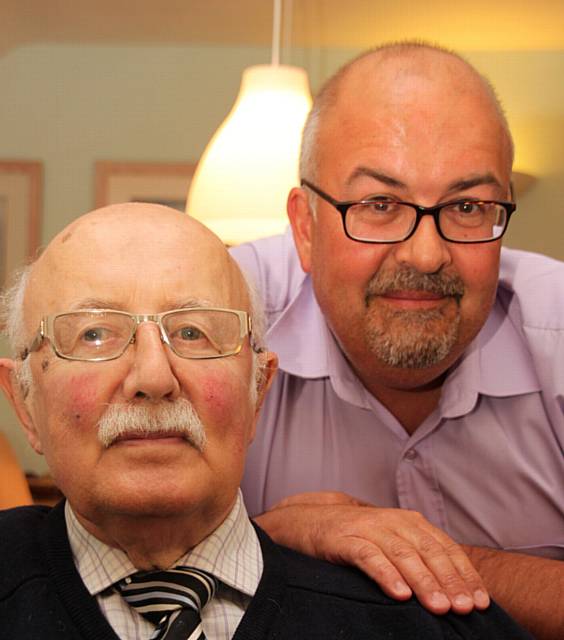Family death riddle solved
Reporter: Ken Bennett
Date published: 22 November 2016
A TEAM of divers have unlocked a remarkable deep sea mystery that has haunted a distraught Saddleworth family for 100 years.
Dutch divers uncovered the wreck of HMS E5, a First World War submarine lost with all hands on June 7, 1916.
The sub, the first British sub to fire a torpedo in the First World War, was presumed to have run into a German mine.
But remains of the 178-ft long vessel have now been discovered in treacherous waters 12 miles north of Schiermonnikoog, a West Frisian island in northern Netherlands.
The find ends the lifetime search by Richard Eckersley and his family who have carried the haunting mystery of their relative's final resting place through generations.
Mr Eckersley (51), from Diggle, is the great grandson of E5's stoker petty officer Francis Garratt Cowburn, one of the 30-strong crew who vanished a century ago.
Over the years, he painstakingly built up a meticulous family tree but his great grandfather's life remained a blank.
But every Remembrance Sunday he has faithfully made a pilgrimage to Pots and Pans, Saddleworth's iconic war memorial, to pay respects to his lost relative and the sub's crew.
However a knee injury prevented Mr Eckersley, a council licensing officer, from visiting on Sunday with his twin sons and 80-year-old father, Malcolm.
But today, Richard, talking exclusively to The Chronicle, said: "Although its the 100th anniversary, the sub's actual final resting place was never known.
"It has remained a family mystery and source of sadness and intrigue.
"I couldn't attend this year's remembrance service but it has added poignancy knowing the sea has given up its secret."
Mr Eckersley said a chance conversation with a colleague, Michael Moore, an advanced underwater diver and photographer, told him of the sub's discovery.
"It was bizarre," said Richard. "I couldn't believe after a century my family would finally be able to close the chapter on just what had happened to Francis."
He received final confirmation from Michael's diving community associate in the Netherlands.
"My family were elated as I'm sure families of the other 29 crew who sadly lost their lives will be too," he declared.
And Richard's father, Malcolm, who lives in Dobcross, added: "I never knew my grandfather but I'm just delighted the mystery surrounding his disappearance has finally been resolved."
Stoker Cowburn, born in 1885, joined the Navy in 1905 and the submarine service four years later.
An onboard engine explosion killed three crew shortly before she was commissioned in 1913.
The sub was involved in several battles and hits on German warships but failed to return from a patrol to Heligoland Bight. It was believed to have struck a mine.
The sub's location came after a unique collaboration between the Dutch government and sports diving teams mapping the wrecks.
Dutch authorities say the wreck sites are risky and virtually impossible because they are in a busy shipping route.
But coastguards kept international shipping traffic away allowing divers from Dutch diving team 'Zeester' to explore the sites and to photograph and film them.
The operation involved the Foundation Relatives Submarines 1940-1945, the foundation 'Duik de Noordzee Schoon' and the Cultural Heritage Agency of the Netherlands.
And because of the great cultural historical interest, Rijkswaterstaat and the coastguard authorised and facilitated the dive.
Remy Luttik, of diving team 'Zeester' said: "A piece of the puzzle of the maritime history of the North Sea has surfaced.
"The results offer hope for relatives looking for missing loved ones."
Martijn Manders, the Dutch government's programme manager of maritime heritage, said: "
"This first joint dive operation in the North Sea marks a new pilot.
"It's important for survivors to protect these final resting places of their relatives and treat these sites with respect."
Most Viewed News Stories
- 1Milan Bar in Lees and The Bank at Delph close doors with immediate effect
- 2Punch perfect Kyle is Oldham's latest national boxing champ
- 3Group wanted following attempted robbery incident on a tram in Shaw
- 4Five arrested after two young victims are robbed
- 5Shaw prospect Rafferty aims to shine at massive 'Ring Warriors Unleashed' show





